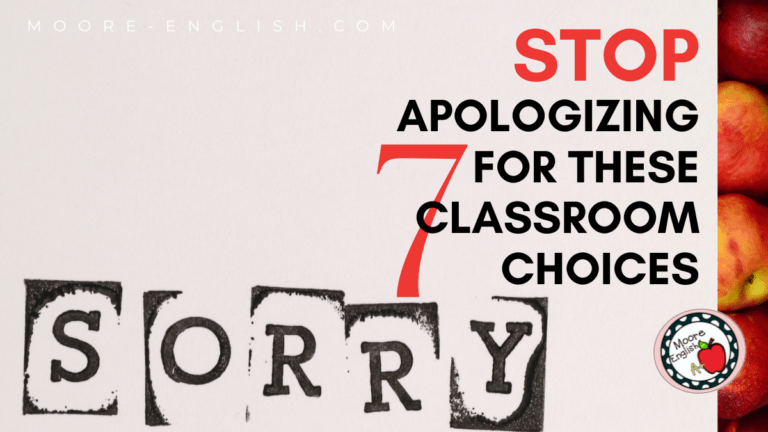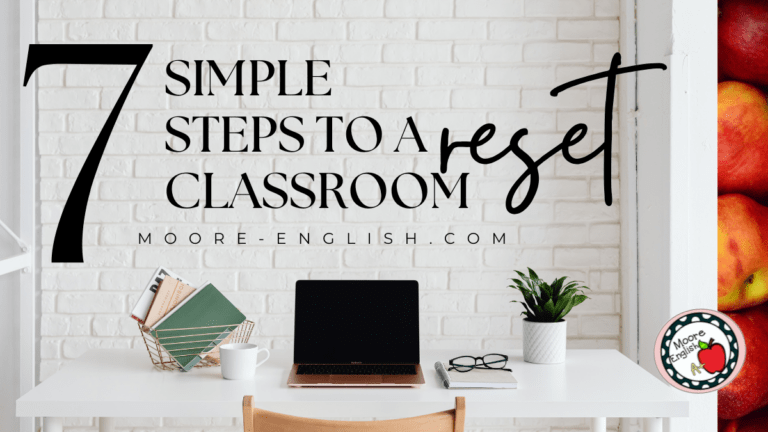It’s a teacher truism, but a lot of teaching happens in the hallway. No one really plans for hallway teaching, but that’s what makes the hallway such a powerful tool! Teachers can accomplish seemingly small but mighty things in the hallway! Because hallway conversations often happen unexpectedly and quickly, it’s easy to miss the golden opportunity they often present. Thinking on your feet can be challenging, so here are a few types of conversations every teacher should master. With these in your pocket, you will be ready for whatever the hallway brings!

This post this post may contain affiliate links. Please read the Terms of Use.
#1: Building Relationships
With Students: Every teacher knows that greeting students at the doorway can have a positive impact. This is a great way to begin building relationships with students. One of my colleagues has special handshakes for certain students. Seemingly small gestures like this can make students feel welcome and seen. Similarly, while teaching in the trailers this year, I have made an effort to always be ready to greet students from the porch. In the rain I hold my umbrella, and in the cold I wear many layers. But greeting my students makes a huge difference!
With Teachers: During passing time, students are building relationships with their peers. And the same is also true for teachers. I have met other teachers in my building as I do tardy sweeps. Seeing other teachers complete tardy sweeps lets me build a rapport with them so when I need support from another teacher, I know who I can count on. This also signals to other teachers that they can count on you. The hallway can also help you get to know your building’s support staff. Last year the special education classroom was across the hall from me, so I was able to interact with paraprofessionals and therapists I otherwise would rarely meet. Finally, being visible in the building also helps your administrators see how much you have to offer.
#2: Managing Behavior
Tough Conversations: We all have hard days. This is true for students, too. Sometimes students need a moment to collect themselves, and the hallway can provide the perfect place. One of my co-workers has a knack (or, really, has built extraordinary relationships with students) for recognizing when students need to step away. When this happens, she will send them to the water fountain or ask them to run a quick errand. Earlier this semester, one of my students was tearfully stressed about her workload. The porch of our trailer proved to be the perfect place for her to fill me in on her struggles. The entire conversation took two minutes, but weight came off her shoulders.
Tough(er) Conversations: In addition to hard days, sometimes students have bad days. I also have bad days. However, students cannot always manage on these days. Sometimes they make poor choices: flipping off another adult, refusing to work, throwing tacos (no joke). When this happens, the hallway can provide a place for a quick conversation about choices and consequences. I very much come from the school of “You can make a choice, but your choice may have consequences.” The hallway often provides the venue for reminding students about actions and consequences. In a few minutes, teachers handle poor classroom behavior. Smart Classroom Management has some great pointers on how to enforce classroom rules and how to apply consequences. This pointers also work for the hallway!
#3: Supporting Other Teachers
The hallway also provides a space for supporting other teachers. This space is special because it is unstructured. Your conversation probably lasts less than a minute, so every word counts. In this situation, you may discuss seemingly trivial details about weekend plans, favorite shoes, or misplaced keys. However, these details build relationships.
Furthermore, these relationship-building conversations often lead to more curricular subjects. Maybe a lesson went well and your colleague wants to share! That’s great! Let her share what worked and ask a question to signal your interest. Let her shine, and she will walk into the next block ready to face anything.
On the other hand, maybe a lesson crashed. Let her share and ask a question to prompt reflection. Don’t pile on or let her carry on too long–otherwise you’ll lose your opportunity. Instead, try to send your colleague back into class with a purpose: to reflect and figure out what to do differently next time. In this situation, I have two favorite questions: What will you do differently next time? And, if she says, “I don’t know,” I like to ask: “Well, if you were advising a teacher in your shoes, what would you say?” These two questions are so similar, but the hypothetical nature of the second one seems to get teachers out of a funk and into reflection pretty quickly. Either one reveals the true power of the hallway!
How do you use the hallway? What are your tips and tricks for helping teachers make the most out of hallway conversations?












